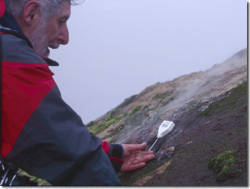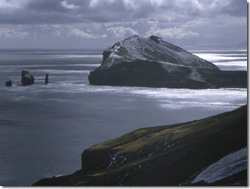Flora and Fauna
Deception Island has a sparse but exceptional flora, including at least 18 species of moss or lichen which have not been recorded elsewhere in the Antarctic, 2 of which are endemic. No other area in Antarctica is comparable. Of particular importance are the unique plant communities that grow at the island's geothermal areas, and the largest known community of Antarctic pearlwort (Colobanthus quitensis). Eleven sub-sites of botanical importance have been proposed as Antarctic Specially Protected Area (ASPA) No. 140. The Management Plan for ASPA140 can be accessed here.

The benthic habitat of Port Foster is also of ecological interest due to the natural disturbance caused by volcanic activity. Three sub-sites are currently protected as ASPA No. 145, with sub-site c protecting extremely diverse and abundant subaquatic biodiversity. The Management Plan for ASPA145 can be accessed here.
Nine species of seabird breed on the island. The world's largest colony of chinstrap penguins (Pygoscelis antarctica) is located at Baily Head, on the south-west coast, where an estimated 100,000 pairs nest. The Code of Conduct for visits to Baily Head can be accessed here.

